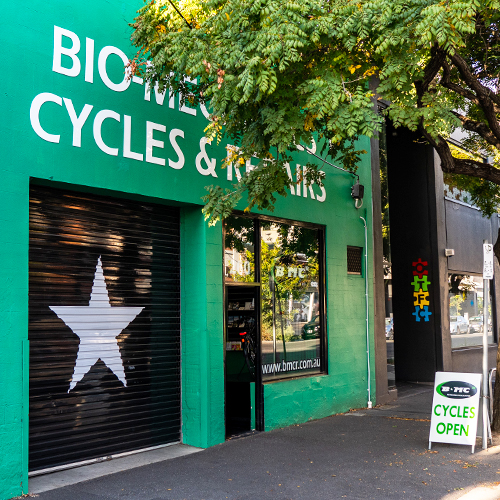Top Five Stretches for Cyclists

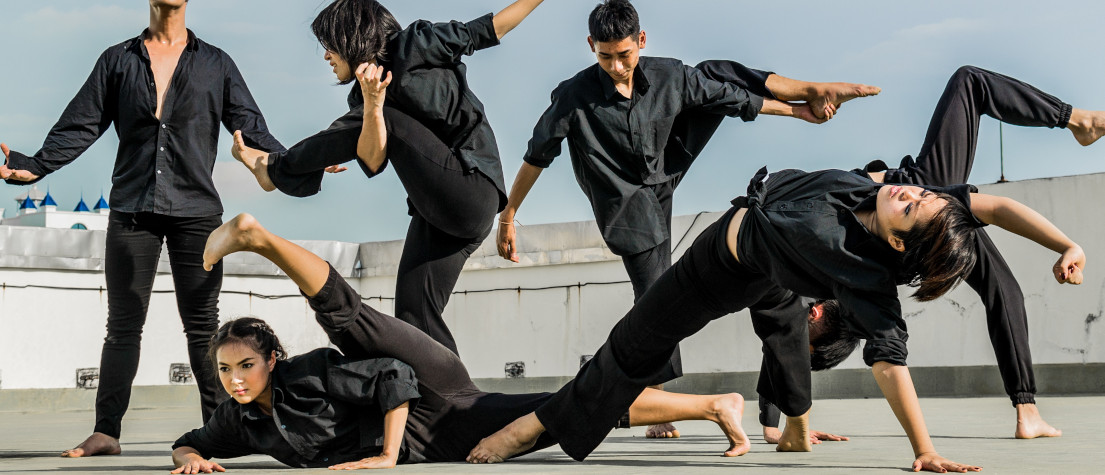
The best stretches for cyclists - your essential guide
Cycling friends, bike riders of all kinds, how do you stay comfy on your bike, regardless of how many kilometres you’re clocking up?
How do you keep injuries at bay under a heavy training load, or when you’re smashing out PBs, or even just riding to work every day?
The answer is easy – and it’s also free.
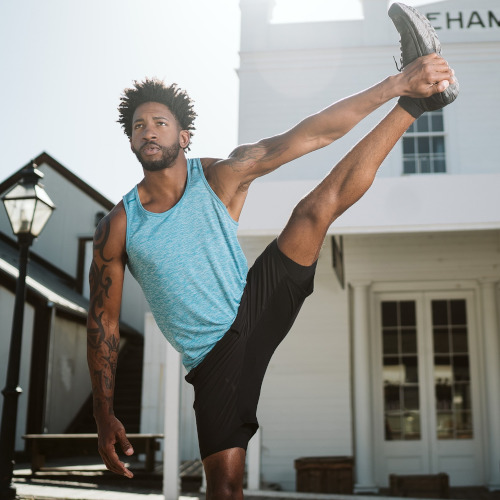
The answer is: stretching.
You may have already attempted a stretch routine for cyclists but gave up because it took too long, or felt boring or pointless. Don’t worry; we get it. That’s why today we’re only showing you five stretches.
That’s right: five!
You don’t need to spend hours on a complex routine, nor do you have to bend yourself into weird shapes or torture yourself with trigger balls.
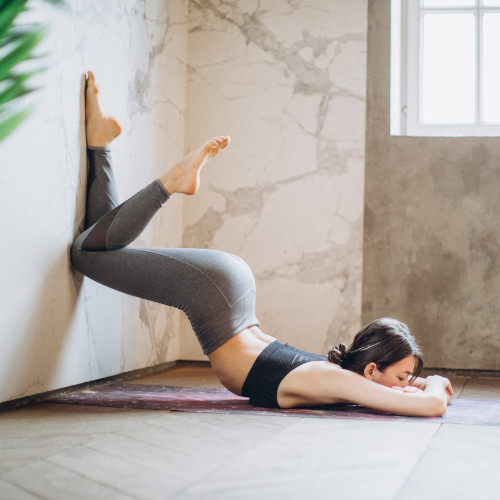
These simple stretches for cyclists will cover the five most critical areas for you to target:
- hamstrings,
- hip flexors,
- quadriceps,
- piriformis, and
- calves.
And because we all like a shortcut, we’re going to show you the most important one first so you can skip the rest if you can’t be bothered. (Consider this The Lazy Cyclist’s Guide to Stretching. Hey, we’re all busy people.)
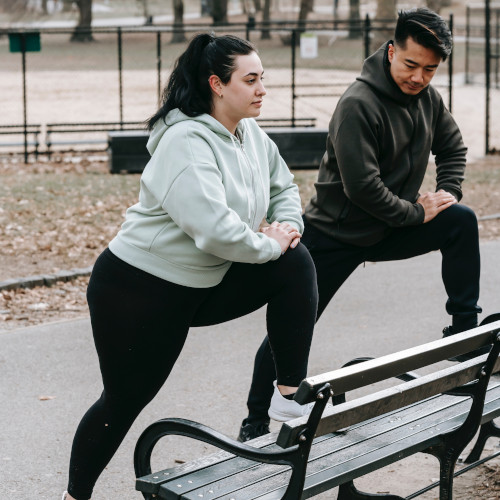
So whether you’ve got tight hips, sore hamstrings, or glutes that just won’t quit (hurting), here are the best five exercises for cyclists to get rid of tight spots and restore flexibility and mobility to your body.
But first, a couple of important notes.
Do cyclists need to stretch?
Yes, you do.
Honestly, everybody should stretch, whether they’re a bike rider or not, but for sports that rely on repetitive motions, it’s especially critical. Stretches for cyclists will help you more than you can imagine, both on and off the bike.
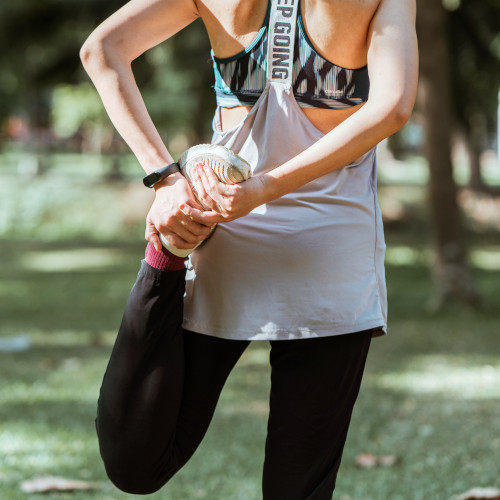
Why is stretching so important?
Stretching’s main benefit is increased flexibility.
You might not think that you need to be particularly flexible – it’s not like you’re going to do the splits any time soon, unless that’s your party trick – but you’d be surprised how important it is.

Better flexibility means that your joints have a better range of motion. Increased range of motion also means increased blood flow to the muscles, which means that they’re able to do their job better (e.g. power up a hill) when you need them to.
Without stretching, your muscles shorten and become tight. This affects your ability to move well, which in turn affects your performance in sport as well as daily life. It also leads to a much greater risk of injury. Nobody wants these things, especially when it’s so easy to prevent them.
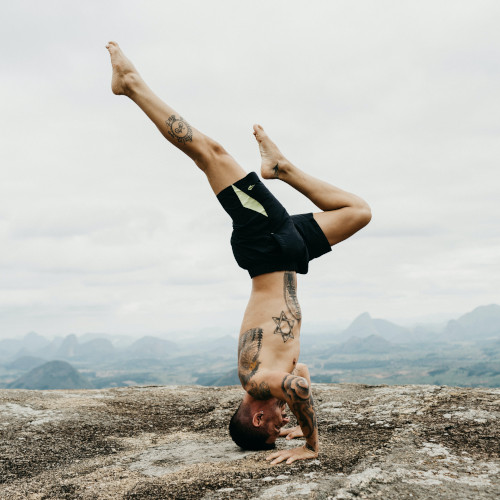
How often do you need to stretch?
We’ve covered this in greater detail in our blog post on how to wake up without feeling stiff and sore, but the short answer is: at least once a week, preferably in a dedicated 30-45 minute session.
Failing that, even a few minutes a day is better than nothing. (That’s usually what we end up doing. Shhh! Don't tell our physio.)

Does stretching before cycling help?
Science-wise, the jury’s still out on that one, so use these five exercises as post-cycling stretches.
The main thing is to be consistent. It’s easy to become complacent when it comes to body maintenance. Everything can feel fine off the bike, but once you’re grinding up Willunga Hill, your quads are suddenly reminding you that you haven’t done any mobility or flexibility work for weeks, and your ITBs are looking forward to making your life a living hell.
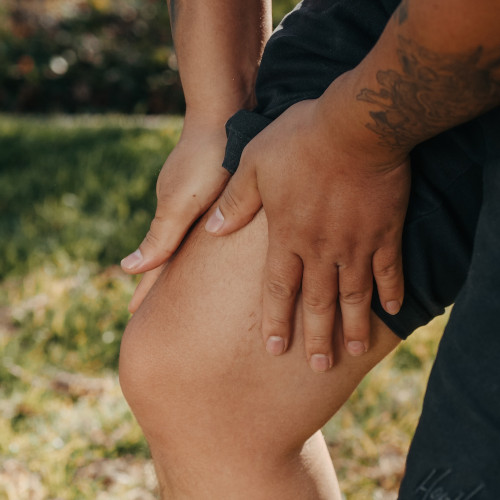
It doesn’t have to be this way. And it doesn’t take much time.
Just remember to do it regularly. Looking after your body is an ongoing project, not a set-and-forget thing.
Now: get ready for better range of motion, more ease of movement, better performance, less pain, and even some stress relief with our top 5 cycling stretches!
Essential stretch area one: Hamstrings
The condition of your hamstrings affects far more of your body than you might think, from your posture to your power on the bike.
For us, hamstring stretches have become the primary way to keep everyday aches and pains at bay, even if we only spend a few minutes each morning on them.
Even if you don't do the whole stretch routine, try doing just your hamstrings, and see how much difference it makes.
You can thank us later.
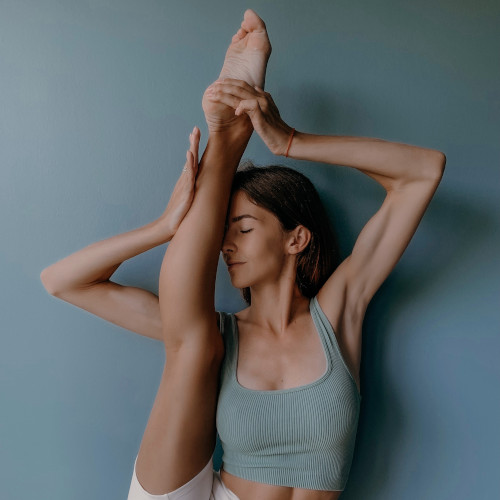
Why do cyclists need to stretch their hamstrings?
Many cyclists ignore their hammies, but they're incredibly important, both in riding and in your everyday activities.
Tight hamstrings can be a factor in knee pain, and also affect your pelvic mobility, posture, and the tightness of your hip flexors and glutes.
Do you get a stiff or sore lower back? Tight hamstrings are often the culprit for that, too.
Love your hamstrings and they will love you back.
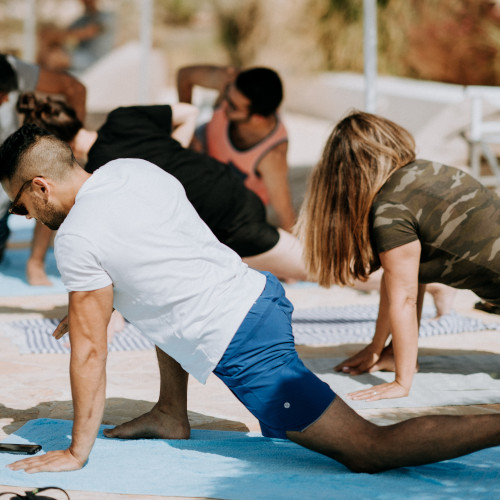
Hamstrings stretch for cyclists
- Begin in the classic hip flexor stretch position, as in the picture above.
- Hook your arm around your leg, as in the picture below.
- Tuck your bottom under and lift your chest.
- Activate your front quadriceps to slide your rear leg backwards (see picture below again) until you feel a stretch in the hamstring of your bent front leg.
- Press your front heel into the floor.
- Hold for 5-6 seconds.
- Release.
- Take a deep breath in.
- When you exhale, use your front quad again to slowly slide your rear leg slightly further back.
- Repeat this step 2-3 times, then change legs.
- Repeat this stretch on each leg 2-3 times.
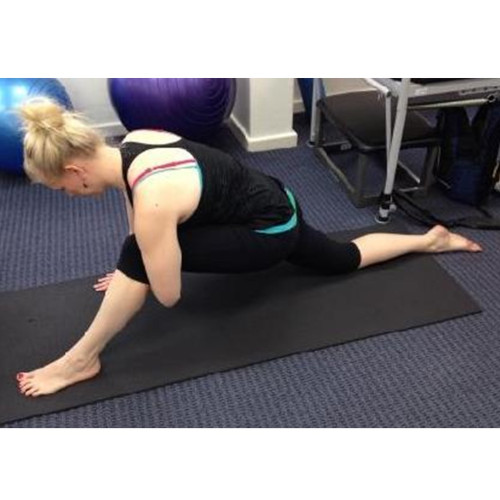
Essential stretch area two: Hip flexors
After hamstrings, hip flexors should be your next priority.
(Ideally, of course, you want to cover all five areas, but we know what everyone's attention span is like, including ours.)
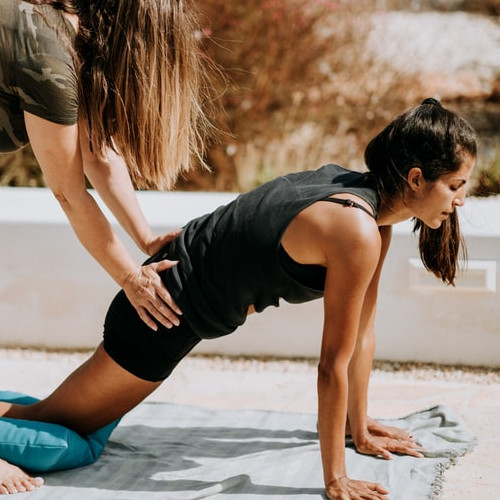
Why do cyclists need to stretch their hip flexors?
Hip stretches for cyclists are essential. Almost everyone who regularly rides a bike is going to have hip flexor tightness to some degree. This is because you’re usually leaning forward on a bike, especially if your position is particularly aggressive (e.g. your handlebars are a lot lower than your saddle).
This positioning results in an anterior pelvic tilt (not to mention the arch in your lower back), which reduces the range of motion in the pelvis and can lead to a whole host of associated issues. So let’s get those hips back to their full wriggling ability.
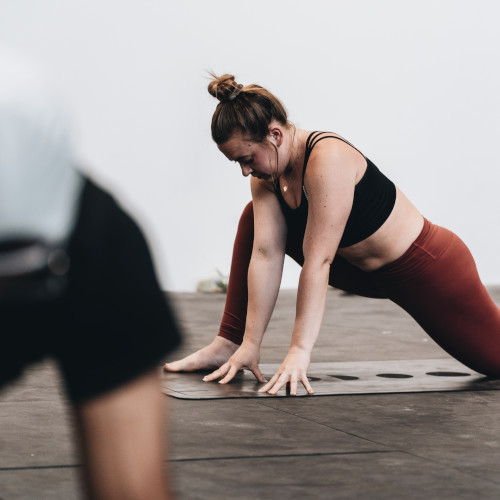
Hip flexor stretch for cyclists
- Get down on all fours and bring one leg in front, placing your front foot flat on the ground with your knee bent at ninety degrees. This foot should be slightly in front of your bent knee.
- Support your weight on your arms, making sure that both hands are inside of the front leg. (Note: if this is too intense, use a support such as a block or chair under your hands.)
- Slowly slide your rear knee backwards in small, smooth movements as far as you can. (A slippery surface, cushion or mat is handy for this.) Make sure to keep your hips level -- don't let them rise as you slide back.
- Sink your hip towards the floor, and lift your chest.
You'll mainly feel this stretch in the front of the rear leg but it can also appear in the inner thigh, glute and hamstring.
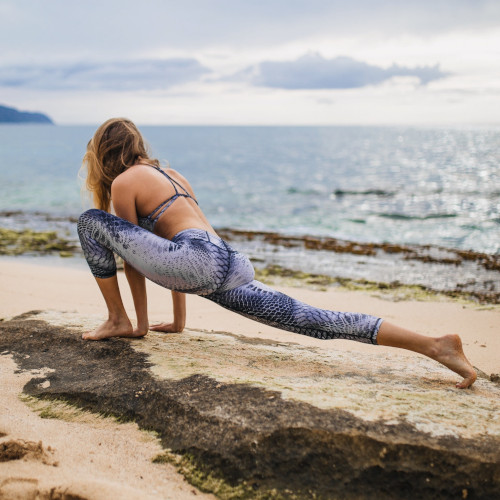
Need to intensify the stretch?
- Draw your rear knee forward without letting it slide forward. Keep your hips down.
- Hold for 5-6 seconds.
- Release.
- Take a deep breath, and as you breathe out, slowly slide your rear knee backwards.
- Repeat this step 2-3 times then change legs.
If you're feeling good and want to push this stretch further, straighten your rear leg and come up onto your toes, like ol’ blue pants above. Look at you go!
Essential stretch area three: Quadriceps

Why should cyclists stretch their quads?
Along with hamstrings, quadriceps are one of the main drivers of action when cycling. If your quads are tight, it can limit the ease and motion range of your knees, which makes it very hard to pedal efficiently (not to mention, you know, walking and stuff like that).
Super-tight quads can also pull your kneecaps sideways (ask Lia how she knows), setting you up for injuries and a lot of physio bills in your future.
Most people know the classic standing quad stretch, or ‘runner’s stretch’, that these photos show. The stretch we're going to show you is a more in-depth variation, and it also avoids the tendency many people have of pulling their knees sideways in the standing version.

Quadriceps stretch for cyclists
- Get a mat or towel and roll it up.
- Sit on the ground with one leg out straight and one leg bent underneath you, as in the picture below.
- Place the rolled-up mat/towel under the butt cheek of your straight leg. (Why? You need to keep your hips level and the mat/towel will do this for you.)
- Tighten your abdominal muscles, squeeze your glutes/butt, tuck the pelvis under a little (think about rolling the top of the pelvis backwards) and lean backwards onto your arms.
- Need to stretch further? Lean further back on your elbows.
“Hey, that feels too easy,” you say. No problem. We can deepen the stretch even more with some PNF!

Wait, what is PNF?
PNF stands for proprioceptive neuromuscular facilitation.
PNF stretching relies on a contract/relax method, and is a great technique to safely increase your flexibility and muscle strength.
Now let’s PNF those quads.
- Press the foot of your bent foot into the floor.
- Hold for 5-6 seconds.
- Relax.
- Take a deep breath in, tighten your abdominals and re-stretch, lowering your trunk closer to the floor.
- Do this twice more if required.
Now repeat the whole stretch on the opposite leg.
Note: don’t cheat this stretch by hyper-extending your back to reach further. No-one’s asking you to join the circus.
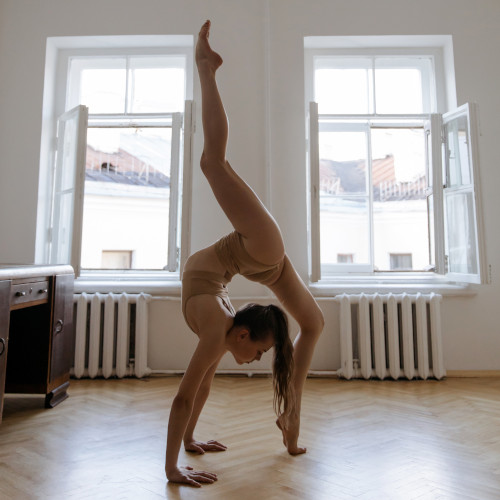
Essential stretch area four: Piriformis
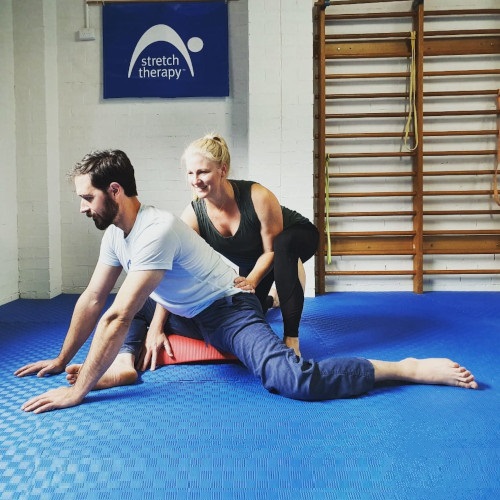
Why do cyclists need to stretch their piriformis?
You probably know your piriformis as your deep butt muscle.
When this area is tight, it can affect your knees and ankles by loading them unevenly and making the knee joint unstable. In addition, a tight piriformis can affect plantar fasciitis symptoms, and sometimes make them worse.
The piriformis is also an attachment site for your ITB. Targeting this area can be far more effective at reducing ITB pain than using a foam roller. (You can read more about this in our popular ITB article.)
Piriformis stretch for cyclists
- Get your rolled-up mat/towel again, and sit side-saddle it, with your front knee at 90 degrees. (See the picture of Holly above, assisting a patient into the right spot.)
- Slowly walk your hands forward along the floor, away from your front leg.
- As you’re walking your hands out, slowly straighten your back leg until the sole of the foot faces the ceiling, as below. Try not to twist your hips.
- Take a deep breath and lift your chest.
- As you breathe out, slowly lower your torso until you feel a stretch in the glute of your bent leg.
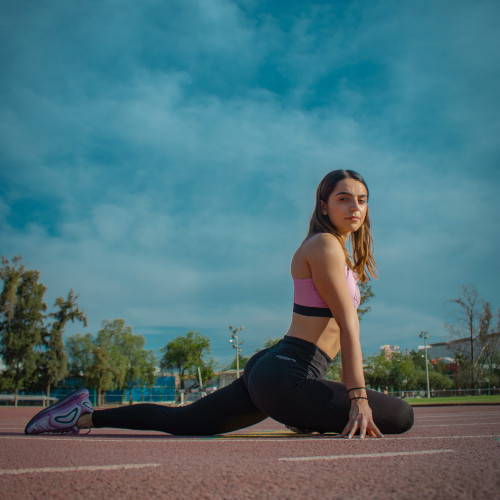
Need to intensify the stretch? Let’s do some more PNF.
- Press the ankle of your front foot into the floor and hold for 5-6 seconds.
- Release.
- Take a deep breath, and when you breathe out, sink further into the stretch.
- Repeat this step twice more if you wish.
Repeat on the opposite side.
Essential stretch area five: Calves
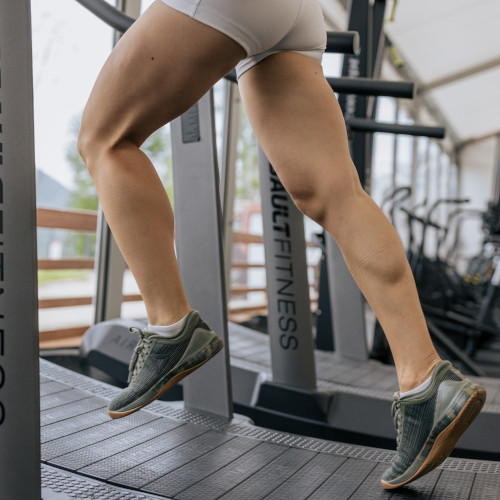
Why do cyclists need to stretch their calves?
You may not actually realise your calves are tight.
Unlike areas like hamstrings or glutes, you often don’t feel calf tightness until you use your body in a way you’re not used to, such as hiking up a steep hill. (Or you get a massage, and almost claw your way off the table when they start working on them.)
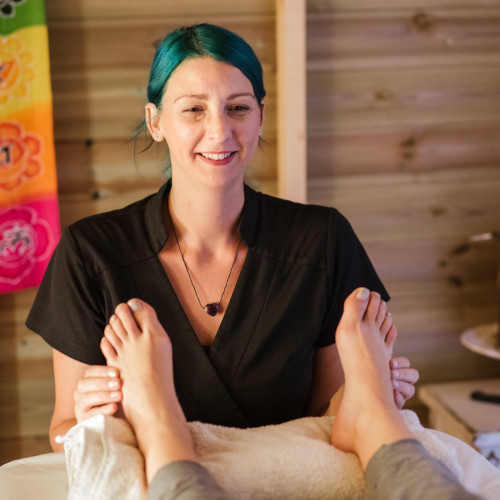
The calf consists of two muscles – the gastrocnemius, which is primarily used for knee flexion, and the smaller soleus muscle, which mostly drives plantar flexion (e.g. pointing your toes). They attach at the knee and the bottom of your heel, so they cover a bigger area than you may think.
Stiff calves can lead to Achilles tendonitis, plantar fasciitis, shin splints, and problems with your knees and ankles. They can also (surprise) lead to back pain. (Seriously, is there anything that doesn’t lead to back pain?)
This particular stretch targets the gastrocnemius.
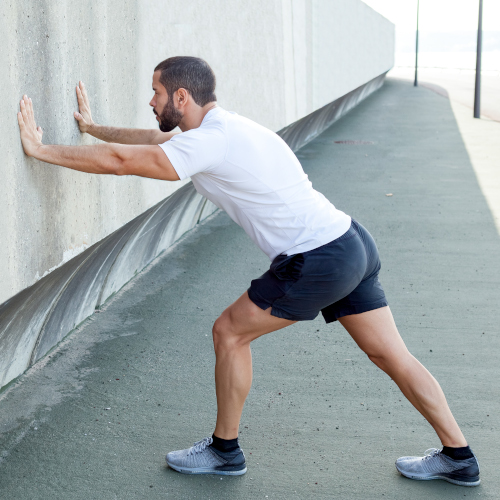
Calf stretch for cyclists
- Face a wall, lean on it, and take a large step backwards.
- Check your feet to make sure your toes are facing forward.
- Press the back heel to the floor, keeping your front foot aligned under the front knee.
- Tuck your bottom under, keep your back leg straight, and slowly lean your hips and body towards the wall, keeping the back heel firmly on the floor.

Need to increase the stretch?
- Imagine twisting the toes of your back foot around to 90 degrees but don't actually let your toes move.
- Now press the ball of the back foot into the floor and hold for 5-6 seconds.
- Relax.
- Take a deep breath, and re-stretch.
- Hold your final position for 30 seconds.
Repeat steps 1 to 4 on the same leg, then repeat the stretch on the opposite leg. You'll want to stretch each side 2-3 times.

Go get bendy(er)!
So there it is – your easy guide to targeting problem areas common to cyclists.
Remember: stretching can be a strong sensation but it shouldn’t hurt. If you feel pain, back it off. You're not trying to crush your body like you crush a training session.
If you’re having long-term mobility or joint issues, it’s a great idea to work with an expert such as a sports physiotherapist who can give you a tailored rehabilitation program and address any underlying problems or potential injuries. Prevention is definitely better than cure when it comes to your physical well-being.
Overall, if you’re consistent with your stretching and mindful of how you treat your body, you’ll be able to cycle for longer, more comfortably, and avoid injuries along the way.
Just think: you could end up as flexible as these guys! Look how happy they are.
Article written with input from Holly Hicks from Fluid Movement and Wellbeing. Thanks, Hol!
We can't fix your knees, but we can fix your bike! If you're having any mechanical problems, let us take care of it for you.


